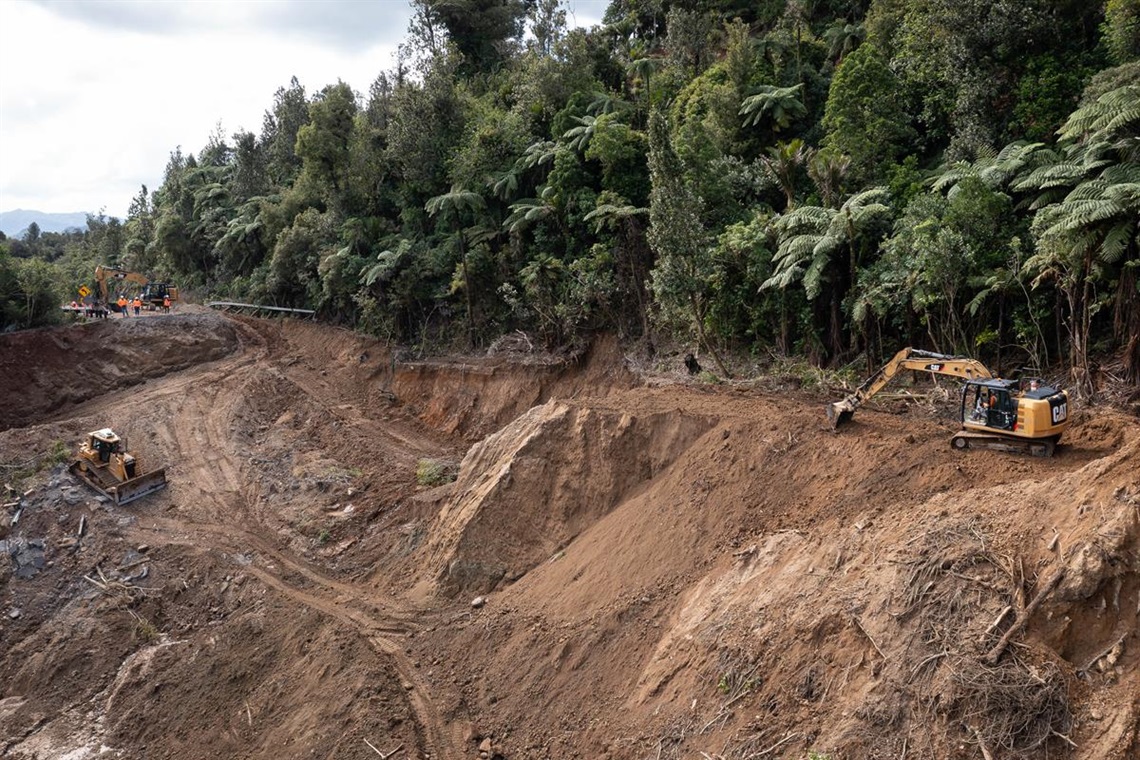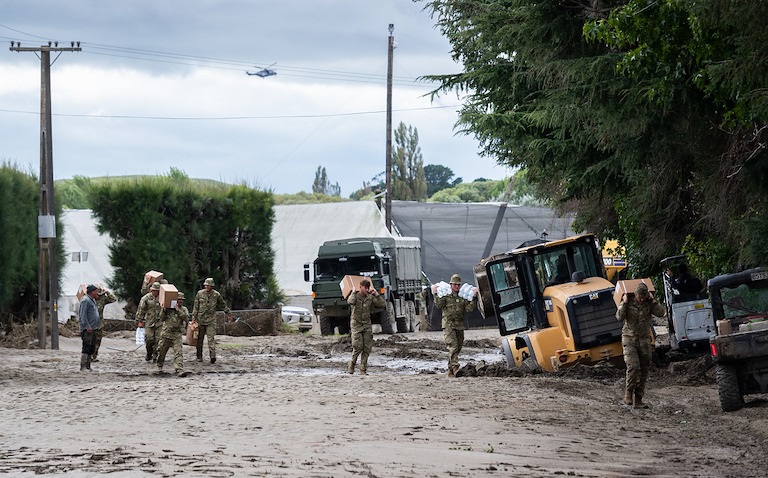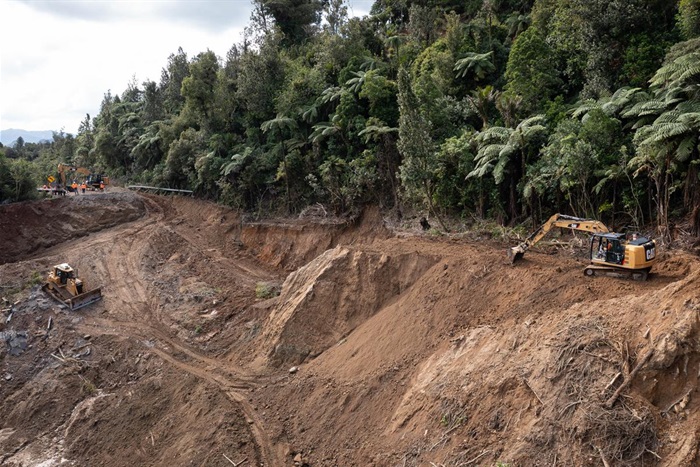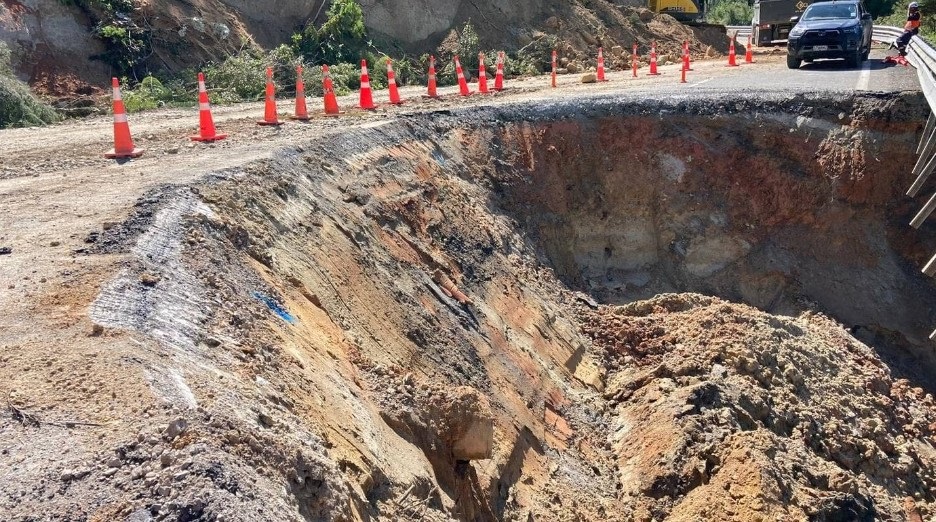Cyclone Gabrielle road to recovery update
Published on 13 March 2023

Just over a month ago, our district along with many parts of the North Island was hit by Cyclone Gabrielle. At the end of this month, the national state of emergency for us, along with Northland and Auckland will end.
It’s been an intense six weeks as we responded to the immediate event and then began moving into recovery (short, medium and long term). The focus throughout is looking after our communities.
Here’s a breakdown so far of our action – while we also continue to do business as usual:
- We’ve met and put in formal requests for further financial support to the Prime Minister, Minister Wood (Transport Minister and Minister for Recovery for the Coromandel), Minister McAnulty (Emergency Management), Minister Allan (Regional Development), Minister Mahuta (Minister for Recovery for the Coromandel) for our local and State Highways to be prioritised for investment in repairs and long-term resilience, as well as operational funding for staffing to minimise ratepayer burden.
- The Prime Minister’s given his assurance his government is committed to the resilience of our transportation links so that communities aren’t at such risk of isolation in extreme weather as they have been.
-
We’ve been lobbying Waka Kotahi/NZTA for an increase to our roading Funding Assistance Rate (FAR) which is usually set at 51 per cent for district roads. Late in 2022 it was increased to 71 per cent, due to the number of works we were facing due to storm events. Due to the damage experienced so far in 2023 we’re lobbying our FAR increased to 91 per cent with business cases required to see whether we can get to 100 per cent on some aspects of damage. That doesn’t get the roads open faster, but it will lessen the financial impact on the district.
- We’re not just pushing for our damaged roads and state highways to be repaired, we’re asking for investment from Waka Kotahi/NZTA and the government for a Transport Plan which includes what air and sea links can be put in place to keep supply lines open in the short to longer term.
- We’ve put a huge effort into immediate support for our business community. We’ve got a business support package underway that includes our Mayoral Disaster Relief Fund and administering the government’s $1.4 million Business Recovery Grant, which we’ll be distributing to people over the next few weeks.
- Applications to the Mayoral Fund closed last week, and we’ve had significant donations from the government as well as media company Stuff. We’ve also had many other donations, like $20,000 from Westpac and $3,237 donated by people in Waiheke Island who have a Coromandel connection. Thank all of you for your support.
Recovery Manager appointed

Former Auckland Council Chief Executive Stephen Town has been appointed as Recovery Lead to support our district as we move away from the immediate response from the impact of Cyclone Gabrielle.
Stephen starts with us this week and is contracted to work two days a week until the end of the year.
Recovery will extend beyond just restoring physical assets or providing welfare services and will be addressed in a coordinated and collaborative way working with stakeholders, iwi and regional and central government agencies. However, there are two major areas of focus:
- Working with Waka Kotahi/NZTA to develop and implement a Transport Plan for the immediate, short and long term connectivity of our network and how other modes of transport can be used.
- Addressing how our Council can deal with disposal of rubbish and recycling and commercial waste from off the district.
- Programme leadership of our other Recovery actions.
Stephen is semi-retired with a home in Whangamatā. He saw the role and with his local government experience, previous work with NZTA/Waka Kotahi and having been through disaster recovery in previous roles wanted to offer his skill-set and support.
“We’re extremely fortunate to have someone of Stephen’s calibre and expertise to help us with our recovery, which will involve working with the government and other agencies,” says Aileen Lawrie, our Council’s Chief Executive. “I’m personally very pleased to have Stephen join us, and it’s a great opportunity for us to learn as much as we can from him and his experience.”
Applications flowing in from businesses to the Cyclone Gabrielle Recovery Grant
130+ businesses have applied so far to the $1.42 million Business Recovery Grant, which is being administered by our Council for eligible businesses within the Waikato Region that have suffered significant and sustained disruption, because of Cyclone Hale and Cyclone Gabrielle. The $1.42 million is part of the $25 million in funding, that Central Government has earmarked to support business recovery in the seven North Island regions affected by Cyclone Gabrielle.
While there is an upper limit of $40k per business, the current $1.42 million cap on funding vs. the anticipated applications from multiple business affected across the region, could mean that payment of this upper limit may be limited to those businesses that have not only suffered a significant economic impact, but also have a substantial social footprint within the community they support.
“We know it has been a really tough time for many of our industries, and we encourage any business that meets the criteria to take advantage of this opportunity for help” says Mayor Len Salt.
Scope of Grants
The Business Recovery Grant Fund has been established to assist businesses most in need.
Eligible Applicants must also meet all these criteria
- Face significant and sustained cashflow issues due to continued challenges with customer access, ability to source stock, supply chain issues, inability to operate as usual due to the physical damage to equipment or premises, or delays in insurance assessment and repairs.
- Be otherwise viable both before and after the extreme weather events.
- Not receiving any funding from the Ministry for Primary Industries recovery fund.
- Commit to acting in line with employment law and with due regard to their employees.
Process
Applicants can start the online application process here, which will then be processed, assessed by an inhouse team before being submitted to an Independent Assessment Panel, who will be making decisions on a weekly basis.
The Independent Panel consists of:
- Erin Wansbrough – Chief Executive SODA, Business Growth Incubator for the Waikato supporting SMEs, businesses and start-ups.
- John Sanford – Chair of Destination Coromandel, the Destination Management Organisation for the Hauraki-Coromandel area.
- Alonzo Mason –Te Puni Kōkiri, Waikato
- Bruce Robertson - Independent member of several Council’s Audit and Risk Committees around the country, former assistant Auditor General.
- Thames-Coromandel District Mayor Len Salt
Applications close Friday 31 March.
Our Economic Development team, with support from the local Business Associations, will be running an information session in Thames, Coromandel Town, Tairua, Whangamatā and Whitianga on the Thursday 16 and Friday 17 March 2023. The purpose of these sessions, will be to ensure that affected businesses are informed of the funding that has been made available by Central Government and have an opportunity to ask any questions they may have around the process.
The information sessions will be at following times and locations:
Board area
|
Venue
|
Date and time
|
| Thames |
Thames Civic Centre conference room |
Thursday 16 March, 12pm |
| Coromandel Town |
Coromandel Town Council office board room |
Thursday 16 March, 5pm |
| Tairua/Pāuanui |
St. Francis Church meeting room |
Thursday 16 March, 12pm |
| Whangamatā |
Whangamatā Town Hall |
Thursday 16 March, 5pm |
| Whitianga |
Whitianga Council community board room |
Friday 17 March, 5pm |
At the conclusion of the Fund, and when all funds have been dispersed a list of grant recipients will be made public on our Council’s website.
If you have any questions, please contact Mitchell King, Economic Development Lead, by email at funding@tcdc.govt.nz or by phone on 027 227 5743.
Te Puni Kōkiri announces $15m Hapori Māori Cyclone Gabrielle Recovery Fund.

Coromandel iwi can apply for the Hapori Māori Fund, announced by Minister for Māori Development, Hon Willie Jackson, and Minister for Whānau Ora, Hon Peeni Henare on the Tuesday 28 February 2023.
Te Puni Kōkiri will have $9 million to distribute through Te Puni Kōkiri’s Māori Development Fund to provide:
- Capacity support such as relief staffing, clean-up expenses, generators and communication equipment
- Recovery planning and co-ordination costs
- Marae infrastructure and support costs such as securing temporary storage for taonga and food.
Iwi, hapū and marae trusts and incorporations, Māori communities, plus other Māori entities and providers in affected areas are eligible for this funding.
While this fund will be assessed and distributed by Te Puni Kōkiri, our Council is looking to support their mahi using the current relationships and networks we have built or is continuing to build with iwi within our rohe. As this support picture becomes clearer, we will keep everyone advised.
If you have any questions, contact Jason Nepia, Economic Development Advisor, by e-mail at jason.nepia@tcdc.govt.nz or by phone on 021 369 112.
SH25/SH25A Thames-Coromandel: Messages from Waka Kotahi

Reconnecting Coromandel
Work continues towards a solution for the SH25A slip, with temporary access tracks now in and a geotechnical drilling rig currently at work on site.
Read more about the proposed repair options below and hear from Regional Manager Infrastructure Delivery Waikato Bay of Plenty, Jo Wilton, in this video.
Also find the latest on other key sites in the Coromandel ahead of the weekend below.
Drilling down into the options
Last week we covered the three options being considered for the repair. Here’s a more in-depth look at each.
1. Retreat north and build a bypass around the top of the site. This is essentially a new road, cut northwards of the existing.
2. Replace the lost section of road with a bridge – a multi span bridge with concrete beams is the likely option however a steel bridge will be investigated also as the beams are lighter to work with.
3. Rebuild the supporting ground with retaining walls.
The right option can only be identified when we have worked out the risks, cost, form and time required to build each option. The present critical task in this process is completing the geotechnical testing and assessment, which is currently underway.
All three options have varying challenges. A potential bypass road above the slip face travels through very hilly country with some steep slopes to negotiate and requires deep cuts to be made. We need to understand what the underlying material is that we would be cutting through, how steep the side slopes could be and if retaining walls are needed. This then tells us how much soil or rock would need to be dug out and removed off site and how long it would take. We also have to factor in the time of year, as we’ll be working over autumn and winter.
If we build a bridge, we need to understand the founding depth for the piles and how to get access for the machinery to drill and construct the piles, as well as lift the beams and everything else required to form the superstructure of a bridge.
If we build a new road from the ground up and along the current alignment, we need to determine what the founding conditions are and how much material we have to remove to get down to this founding layer. We'd also need to investigate what kind of retaining wall to use and the source of the backfill material placed behind the wall face, to get it built as quickly as possible.
Overall, each have their challenges. Ground conditions are expected to be a significant factor in determining the right option, as well as the time required to get materials and resources to complete the construction.
In the meantime we are doing as much as possible to be ready to hit the ground running with the chosen option. This includes looking at how we can shorten the design time required, obtain any land access permissions and building consents, as well as preparation on how we manage ecological impacts.
SH25 Hikaui to Opoutere

SH25 is now open between Hikuai to Opoutere with stop/go traffic management in place to light vehicles only. This is subject to change and the road may close without warning.
People are advised to check our Journey Planner before travel and be prepared that we may have to close the road at any point if there is additional cracking or damage.
A big shout out to our contractor Higgins and their subcontractors who have been working very quickly to try to make this passage of state highway safe again. As this video shows, arborists have removed vegetation to allow a digger to increase the width and length of cut into the bank in order to keep traffic as far away from the underslip as possible.
We appreciate how frustrating this latest disruption is for road users in the Coromandel. Emergency works have been underway all week, and geotechnical investigations can now start in earnest to help inform a permanent fix for the section of the highway that has fallen away. We’ll keep everyone updated as soon as a solution has been determined, but in the meantime, we are very much focused on the short-term fix and keeping at least one lane open.
There’s going to be significant levels of investment needed into particularly our roading network. It’s not going to be an easy or quick fix – but there is willingness and collaboration to build back – and build back better with more resilience. If people need help, we’re still here with support from other agencies and central government. Please let us know.